Hasegawa | S-14: 1/32 Messerschmitt Me 262A
Reviewed by Rato Marczak
You remember this one! The Hasegawa Me 262 in 1/32 scale. This kit reached the shelves during the (first) Hasegawa 1/32 golden age, along with the Bf 109, the P-51 and the Fw 190. Curiously, this kit was released just after the Revell offering in the seventies.

My sample box art. I think the last box to be issued was the Galland commemorative issue.
I don´t need to warn anyone about the historical importance of this aircraft but, unfortunately, there´s only two games in the 1/32 town: Revell and Hasegawa, and none of them are in their current catalogues. The Revell´s one has very serious accuracy and shape problems, and that´s why I decided to review the Hasegawa´s one first. Comparing both kits, the latter is a way better model, and definitely the one to choose, unless you´ve been drinking the same stuff that Brian Cauchi is.
For nostalgia purposes, here´s the original box art (we´re getting old, eh?):
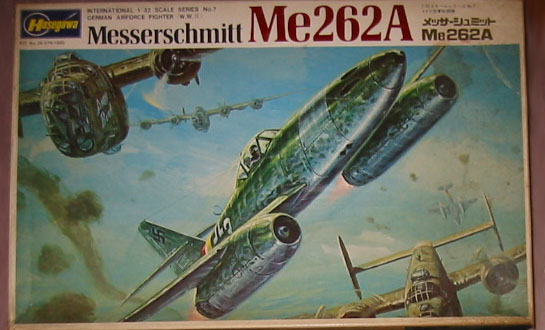
If I recall correctly, this was the first box art of this kit, sometime during mid '70s. Those closing B-24s still scare me.
On to the Sprues
The kit comes with 130 light grey plastic arranged in four sprues, plus four clear parts. Instructions are in the form of an eight pages booklet. The painting/decal placement guide comes as a separate sheet printed in color - nice touch.
My sample didn´t show any significant flash, but there are many seam marks. In addition, I found at least a half dozen sink marks along the fuselage halves, all of them around locating pins. Look for them carefully, because the are there, albeit very subtle. Apart from that, the kit is very well molded, and remember that all the surface details are molded raised. The parts breakdown follows the classical way, the exception being the center lower wing, which Hasegawa thankfully made as a single part (after cleaning the parts properly no dihedral deviation should appear). All parts of the sample show a very polished finishing, indicating that the molds have not deteriorated in the last thirty years or so.
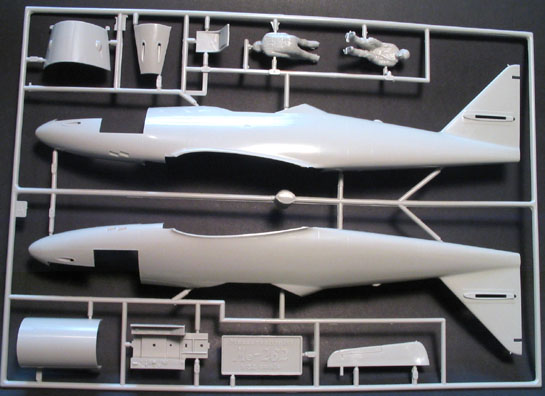
Sprue 1.
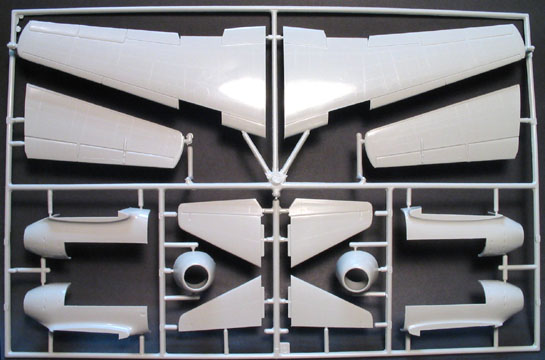
Sprue 2.
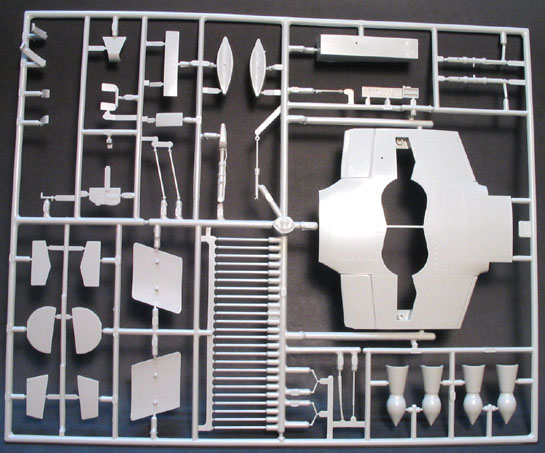
Sprue 3.

Sprue 4.
The rudder comes as a separated item, but it is not to be glued angled as its leading edge strangely is not as rounded as supposed. All other control surfaces are molded in. There´s no separated flaps to be glued deployed. That´s fine you may wonder. However, there´s no separated wings leading edge slats neither. Now we do have a problem, as in the real machine the slats were automatically deployed once the aircraft decelerated to a given speed. In other words: slats of grounded Me 262 are always down. On the other hand, the corresponding recessed lines are so heavy that they almost do the trick!

A close look to the leading edge slats in the NASM Me 262.
Hasegawa´s representation of the fasteners and screw heads rivals the best Revell efforts of the time. Even the slots in screw heads are there. I don´t know why modern kits have abandoned this sort of thing (all you get today is a recessed or raised circle).
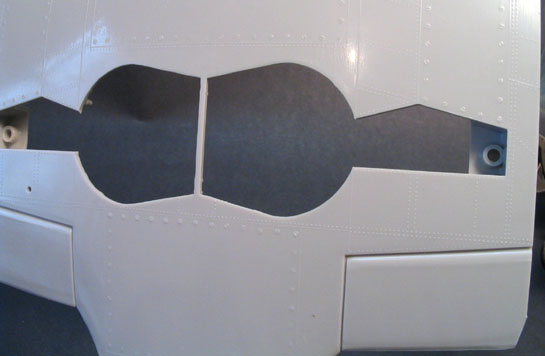
Surface details at a glance - lower center wing.
The surface details are quite convincing, even for today´s standards, provided you don´t bother about recessed/raised discussions on panel lines and rivets. The fact is that most panel lines of the Me 262 surface was puttied and sanded at factory to reduce drag. Take that into account if you plan to rescribe your model.
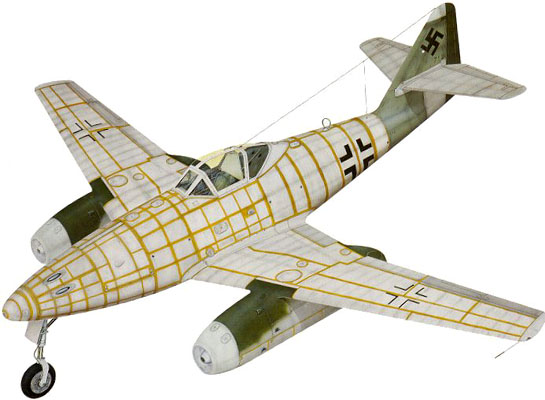
Areas commonly puttied on the Me 262...
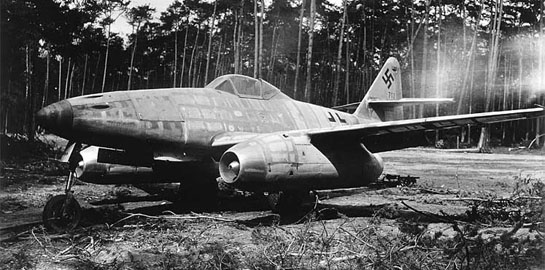
...and here´s the photographic evidence.
Cockpit
The cockpit is typical of a kit from the '70s. Very basic, although you can judge it enough if you don´t plan to open the canopy. The kit brings a reasonable well done control panel, floor/sidewalls in a single piece, pedals, stick, seat and headrest. The armored headrest is to be cemented on a slot on the canopy. This is not correct (more on that later). The rudder pedals are completely wrong. They should be similar to those used on the Bf 109 or the Fw 190, so you can stole a plastic or PE detail part from them. The seat is also oddly shaped in comparison to the real part.
An interesting feature of this kit (and also in the real aircraft, I suspect) is that the complete cockpit tub can be inserted after the fuselage halves are glued, making the modeler´s life much easier.
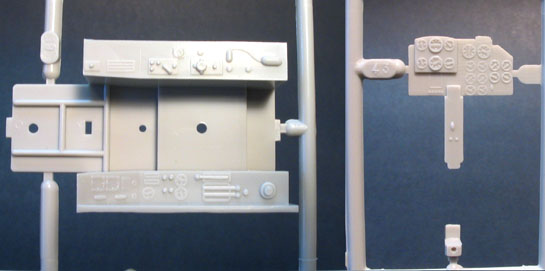
Cockpit parts: floor/sidewalls and control panel.
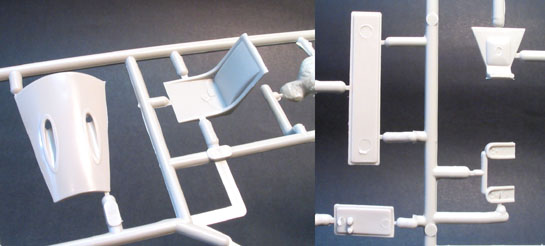
More cockpit parts: seat, pedals and headrest. Also visible are the upper guns cover and the nose landing gear doors.
The Me 262 could be equipped with either the EZ-42 gyroscopic gunsight - introduced late in 1944 for the last generation of fighters, or the Revi 16b. Check your references as they are very different. The picture below shows the former one mounted on the NASM´s Me 262A.
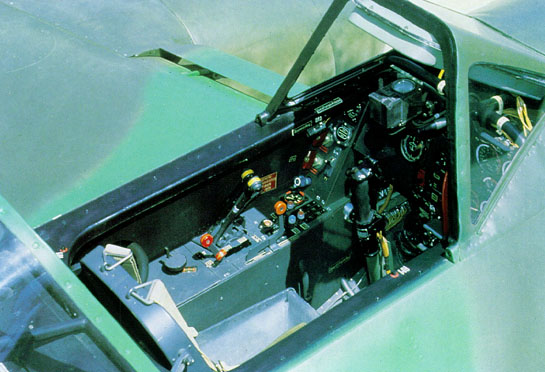
A nice view of the cockpit. Note the attachment points of the seat belts and the EZ-42 gunsight.
The modeler can use the kit parts as indeed a good starting point to make a better cockpit. The pedals and the seat must be replaced for an authentic aspect. Another point missed by Hasegawa is the area atop the control panel. It is closed in the kit but it should be open, showing the rear of the control panel and all those gauges and wiring and stuffs. The area inside the rear canopy, just behind the headrest, also deserves some attention, because there´s no detail molded there.
I know Eduard used to produce one or two photoetched sets for this kit. A better option is the resin cockpit produced by Grand Phoenix Productions. It replaces completely the kit cockpit and incorporates many details of the bottom of the cockpit tub. These details are visible from the main wheels bay.
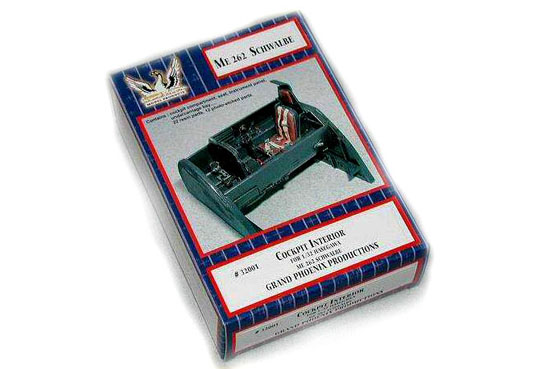
The Grand Phoenix Productions resin cockpit set for this kit.
Landing Gear
The landing gear parts are well molded, but suffer from countless ejector pin marks on most of them. Hasegawa opted for molding the brake lines with the landing gear legs. If you don´t like the idea, be prepared for a very boring removal task.
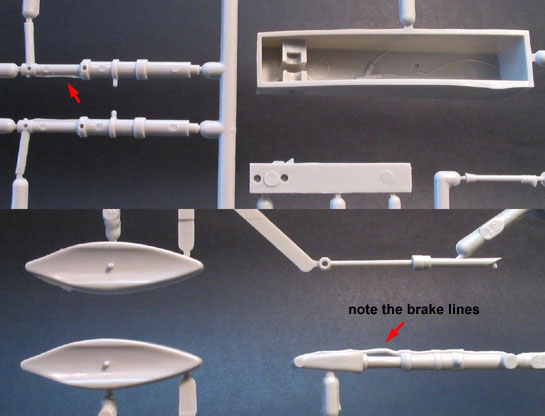
Landing gear details. Note the molded-on brake lines. Also visible are the nose wheel bay and the bomb racks.
The nose wheel is fine, with very subtle details and the characteristic tread representation. The corresponding bay and doors, however, is another story. The bay is basically an empty box with a slot to attach the nose gear leg, while the doors are simply plain plastic rectangles. Detailers will test their skills improving these areas. I included some pictures below as a starting point.

The kit wheels. Main (left) and nose (right). The former is just symbolic.
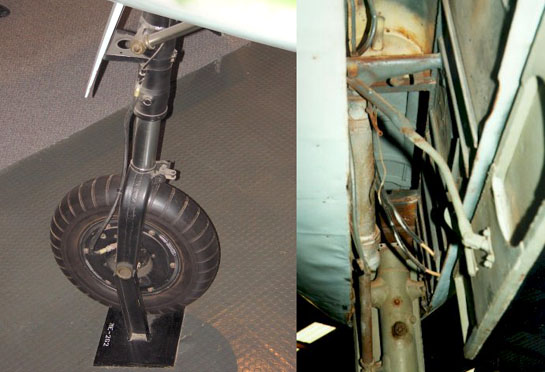
Some detail shots of the nose landing gear and wheel bay (looking forward).
If the nose landing gear is barely acceptable for a detailed model, the main one is even worse. The wheels are completely wrong, as the hubs are devoid of any detail (compare with the picture below) and there´s no representation of the diamond tread at all. Jerry Rutman's Me 262 wheels and tires set will be a valuable time saver here.But a yet worst area is the main wheels bay. As one could expect, the area is open and the bottom of the cockpit tub is visible, as well as all the surrounding details: oxygen and compressed air tanks, lots of plumbing, perforated plates, wing spar, fuselage structural details and who knows what else. This is the weakest area of the kit, in my opinion, and its improvement will require a lot of elbow grease. There is no detail set to help you here (that I´m aware of).
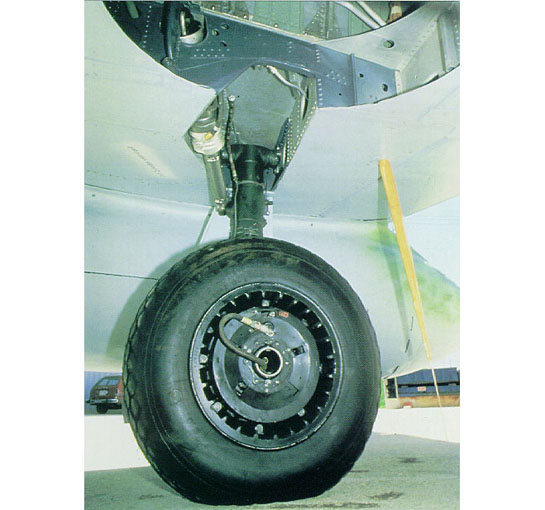
The main wheel. Some details of the wheel bay are partially visible.
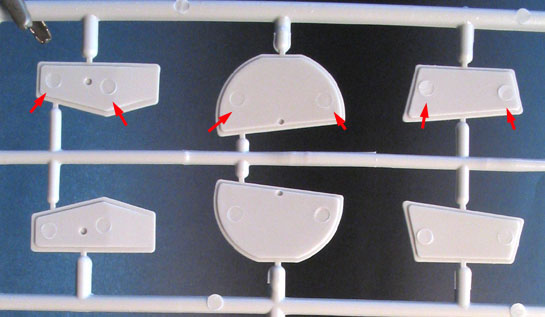
Main landing gear doors.
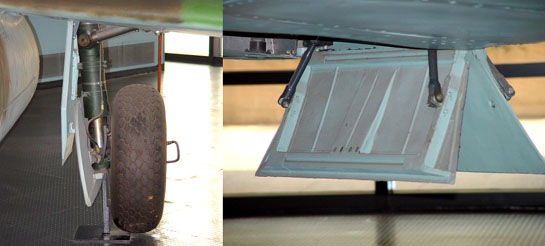
The correct configuration of the outer (left) and inner (right) landing gear doors.
Engine
There are many engine maniacs among 1/32nders, and this kit is an excellent opportunity for a superdetailed project. Hasegawa provided both Jumo 004 turbojets, and they are visible through removable access panels atop the engine nacelles. Viewed from the nacelles intakes, the engines are acceptable, but if you plan to open the access panels, start gathering material now, because all you get from the kit are two engine halves with some suspicious details molded-on. Of course the kit parts are an excellent ´shell´ to start a new engine. Even if you are not planning to show the engines, do not skip them during the assembly, as they are an important stiffness element of the engines subassemblies, and will eventually eliminate the see-through effect.

The engine nacelles and intake.

Well, this is the famous Jumo 004 turbojet engine.
The bullet-shaped stuff in the center of the intake housed the Reidel two-stroke starter engine. The kit representation is good, but does not have the characteristic lanyard handle used to start the engine. The first stage compressor blades are provided in the kit, and all they need is a good drybrushing after a paint coat. These parts are quite visible looking from the jet intake.
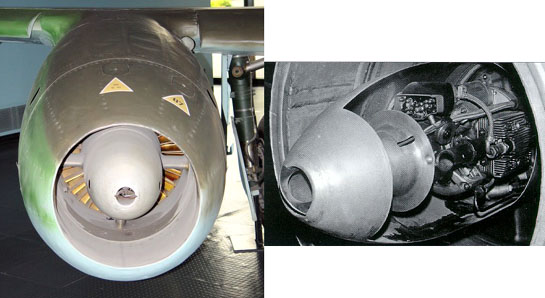
Jet intake. On the right, the Reidel starter engine.
Weapons & Ordnance
This kit enables the modeler to show the powerful 4 x 30mm Mk108 cannons. The armament bay is somewhat simplistic, but the cannons themselves need only some add-ons to be very convincing. If you want to show this area, consider the addition of electric boxes and a plethora of wires. The kit also brings a pair of 250 Kg bombs to model the jet-bomber version. I guess this option was not included in the first release of this kit... Anyway, the bombs lack the typical rods connecting the rear end of the fins.
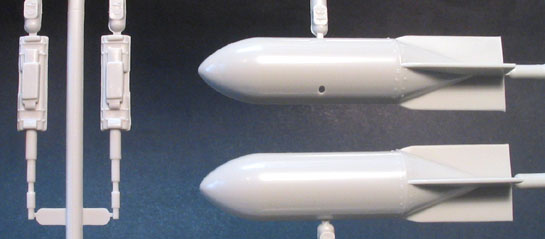
The Mk108 cannons and the 250 Kg bombs.
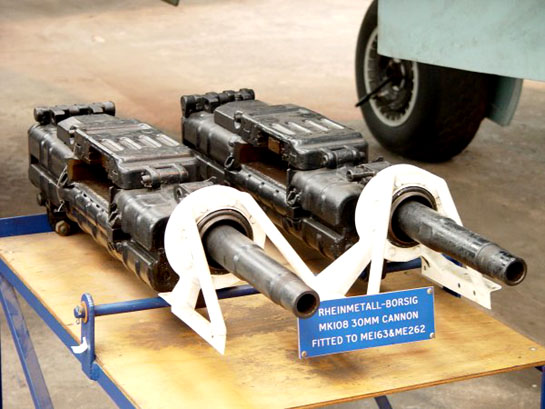
The real Mk108 deal.
Hasegawa molded the gun bay doors in a single piece. The photo below show the correct configuration, with each side hinging separately. The gun muzzles should be visible from the nose openings, and the insertion of a piece of tubing will make the model more realistic there.

The correct configuration of the gun bay doors. Note the visible gun muzzles in the cannon openings.
A complete set of the R4M rockets are also provided by Hasegawa. While the rails are good enough, the rockets are simply a bunch of plastic sticks. Comparing with the real weapon, they are too rounded at the tip and don´t have the fins at the rear end. Remember that the rails were made of wood, and many times not painted as the rest of the aircraft underside.
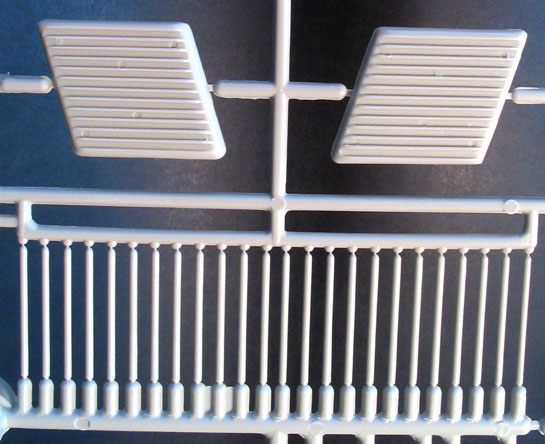
The kit´s R4M rocket set.
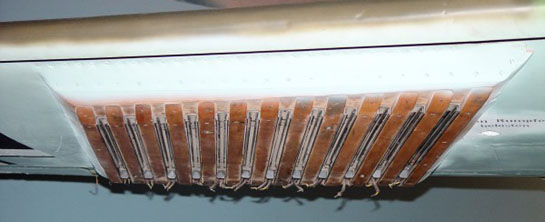
The real R4M rails under the wing of the NASM Me 262.
Clear Parts
Only four parts here. Three for the canopy, and a small reflective glass to be used in what I think is the Hasegawa´s rendering of the Revi 16b gunsight. The parts are well molded, very translucent, and have a good scale thickness. However, Hasegawa molded a slot to cement the armored headrest inside the canopy, an this is not correct. In addition, the slot will be quite visible, not to mention eventual glue spots. No easy solutions here. You have either to scratchbuilt a new center section or sand/polish the slot.

The clear parts of the kit.
Decals
The decal sheet provides three options: two fighter birds from the JG7 and a bomber from KG51, all operating during early 1945. One of them (´white´ 3) was possibly flown by Adolf Galland. Hasegawa provided a separated color printed sheet as decal placement instructions.
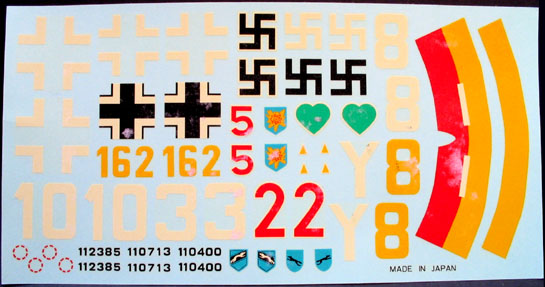
The decal sheet.
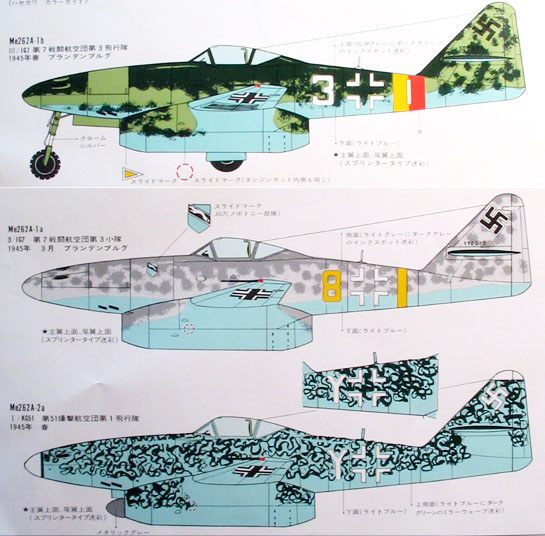
Decal placement instructions.
My sheet is a bit too old, and seem to be of the thick type, typical of Hasegawa decals until some time ago. Fortunately, the modeler have a good number of aftermarket choices. Some still easily found are:
- Microscale #32-033: provides decals for 1 Me 163 plus three Me 262s.
- Eagle Strike #32-017: Me262 Sturmbirds (Single Seaters) (Me 262A-1a, 2a)
- Eagle Strike #32-053: Sturmvogel, Pt I (Me 262A-1A, A-2)
- Eagle Strike #32-054: Sturmvogel, Pt II (Me 262A-1A, A-2)
The unit numbers and the squadron badges are possibly usable, but the (very) few stencils provided are really bad for today´s standards. I can not recommend enough the new Hobby Decal dry transfer stencils for this kit.
Fitting and Accuracy
At the time of this release, the quality of Hasegawa moldings used to be head and shoulders ahead the Revell´s one, particularly in what concerns surface details and fitting. On the other hand, Revell used to beat Hasegawa in shape and dimensional accuracy. We have an exception to the rule here, gentleman.
The fit is excellent, with almost no need of filler. Even the wing root resulted a hairline gap that won´t require putty or sanding.
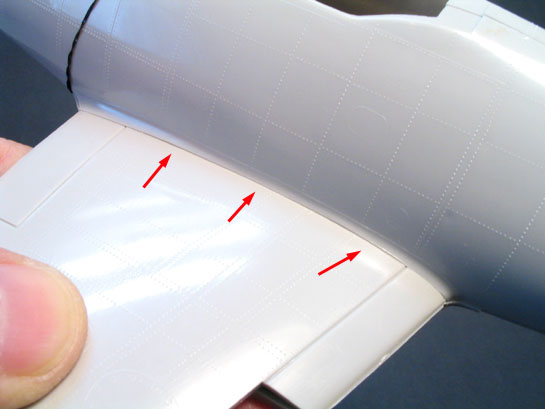
Wing root gap.
I was very concerned about the gaps around the center bottom wing. However, Hasegawa achieved a very good fit there, too. With a careful application of liquid cement, only marginal amounts of putty will be necessary.
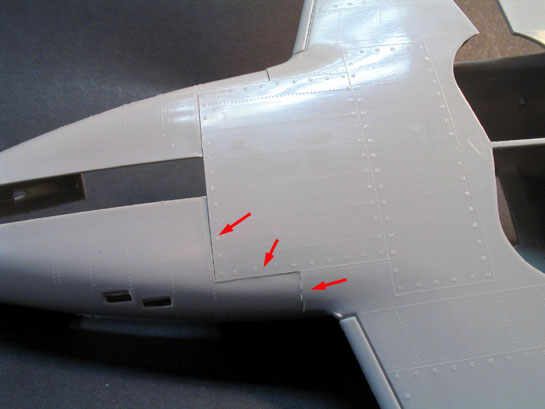
Dry fitting the bottom wing with the fuselage.
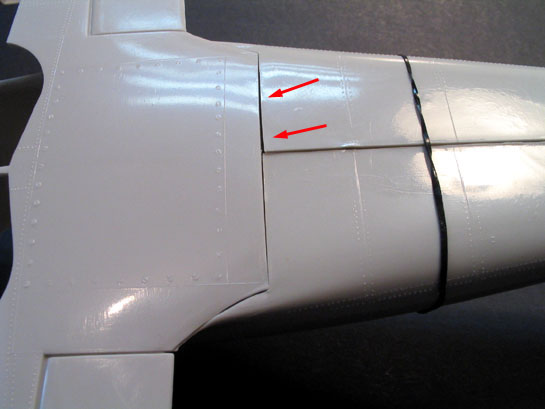
Dry fitting the bottom wing with the rear fuselage.
As for the shape and dimensional accuracy, contradicting the fame of other kits of that time, this one is very accurate, in shape and dimensions. I found just a small discrepancy on the length of the inner slats of the outer wings.
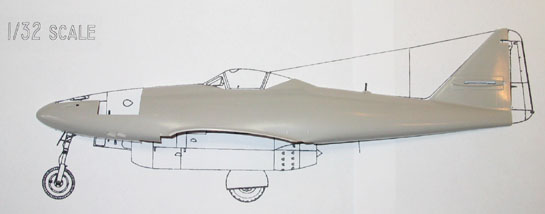
Fuselage accuracy.

Wing accuracy.
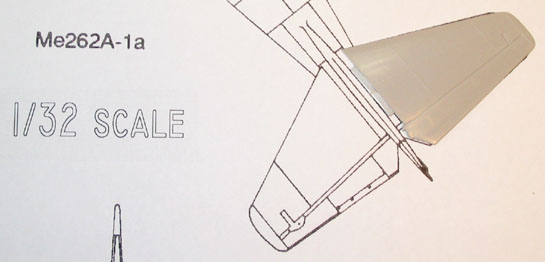
Stabilizer accuracy.
Final Comments
This is a great kit, even if built out of the box. Rescribing is up to you and, even if you can live with the kit´s cockpit, definitely the wheel bays will deserve some attention. There are just too many details there to leave the area simply empty. You don´t need to count rivets: add some structural details from plastic stripes and some plumbing/wiring. "Use gizmology", as François Verlinden would say.
Here´s an example of what can be done if you really care - a fully detailed main wheel bay built by LSP contributor Matsumoto Naoto:
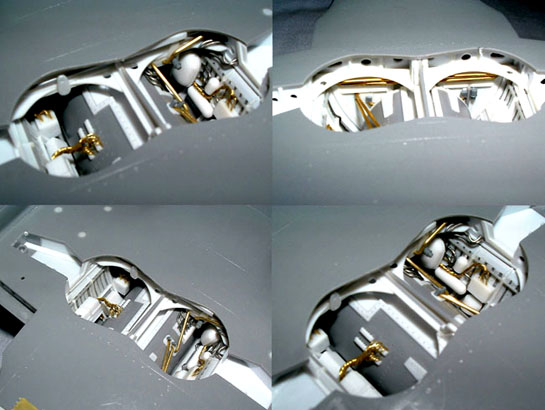
The fabulous work of LSP contributor Matsumoto Naoto on the wheels bay area.
You can have a better perspective of what can be done with this kit after reading the following LSP articles (although Sašo used the Revell offering):
- Building the Hasegawa Me 262 in 1/32 by Sašo Knez
- The Definitive "how to" of constructing an Me 262 1/32nd scale kit by Brian Cauchi
It won´t be difficult to cut the flaps off, or to make new slats from scratch. Also, the Sturmvogel carried signal flares along the lower port side of the fuselage. Drill the eight corresponding holes there.
Just remember we are in the final months of the war. The Luftwaffe is starting to show signs of a chaotic production, maintenance and training. All these would reflect on the aircraft condition. Each Me 262 used to have its particularity, even inside the same squadron, no matter it was about camouflage application, markings or anything else.So you are plenty of choices about camouflage, markings and weathering.Whatever is your case, check carefully your references. Here is a short list to start from:
- Jenkins, D. R.; Messerschmitt Me 262 Sturmvogel, WarbirdTech series, vol. 6, Specialty Press, 2002.
- Smith, J. R. & Creek, E. J.; Me 262 - Volume 1, Classic Publications, 1998.
- Smith, J. R. & Creek, E. J.; Me 262 - Volume 2, Classic Publications, 1998.
- Aero Detail #9; Me 262, Model Graphix (out-of-print).
- Replic Magazine, number 107, July, 2000.
And don´t forget to check the fantastic list of detail references compiled by Charles Metz.
Conclusions
A nice kit. Easy to build, reasonably detailed, good fit. It is simply too old to get four stars, and many details are missing. With a bit of work, a fabulous model will result:
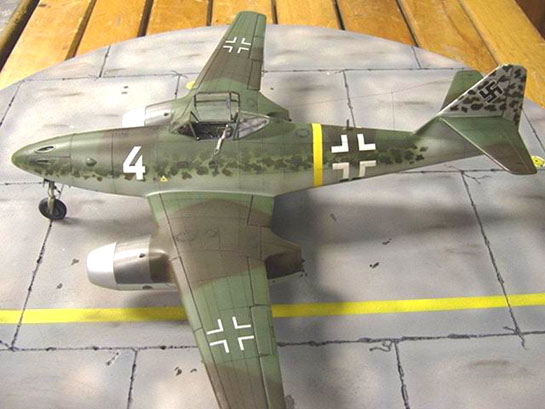
A nice Me 262 built by Jean Claude Adriaens (courtesy: Patrick Spitaels).
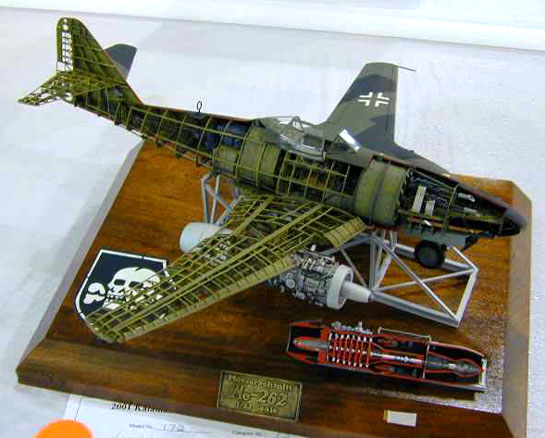
A fantastic Hasegawa Me 262 cutaway presented at the AirZoo Invitational in 2001.
Until Hasegawa or Tamiya come up with a new one, this is the 1/32 scale Me 262 to be recommended.
© Rato Marczak 2004
This review was published on Saturday, July 02 2011; Last modified on Wednesday, May 18 2016
